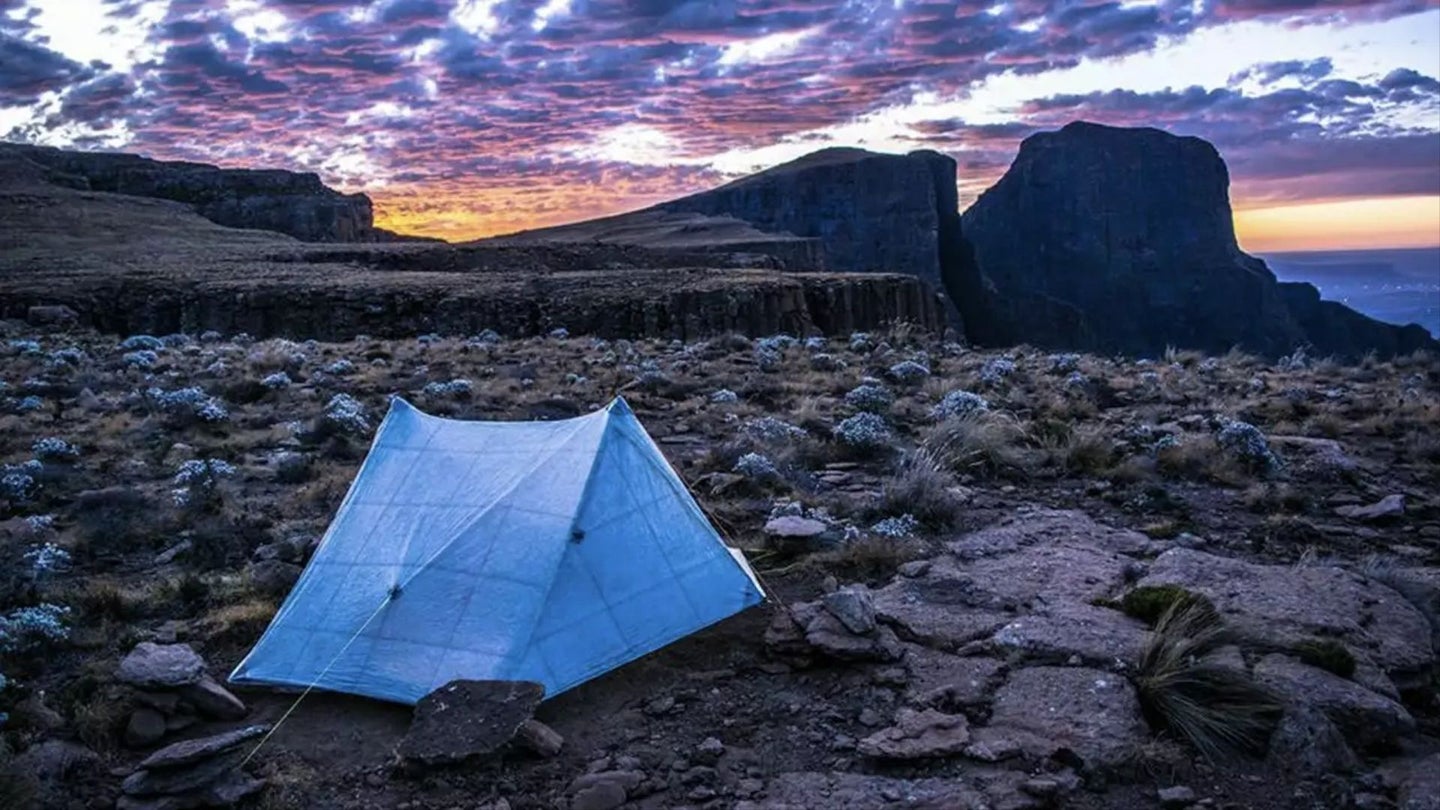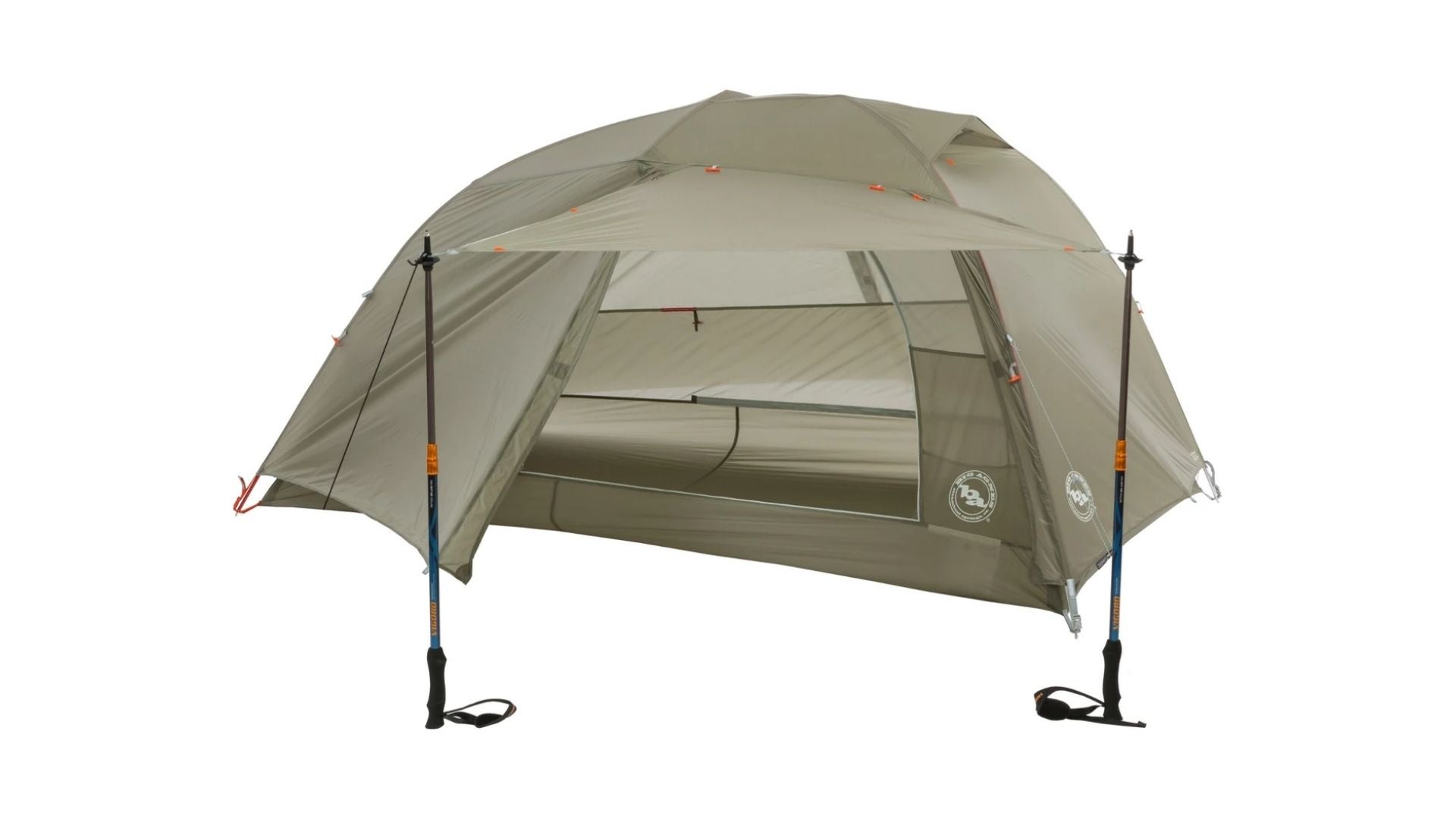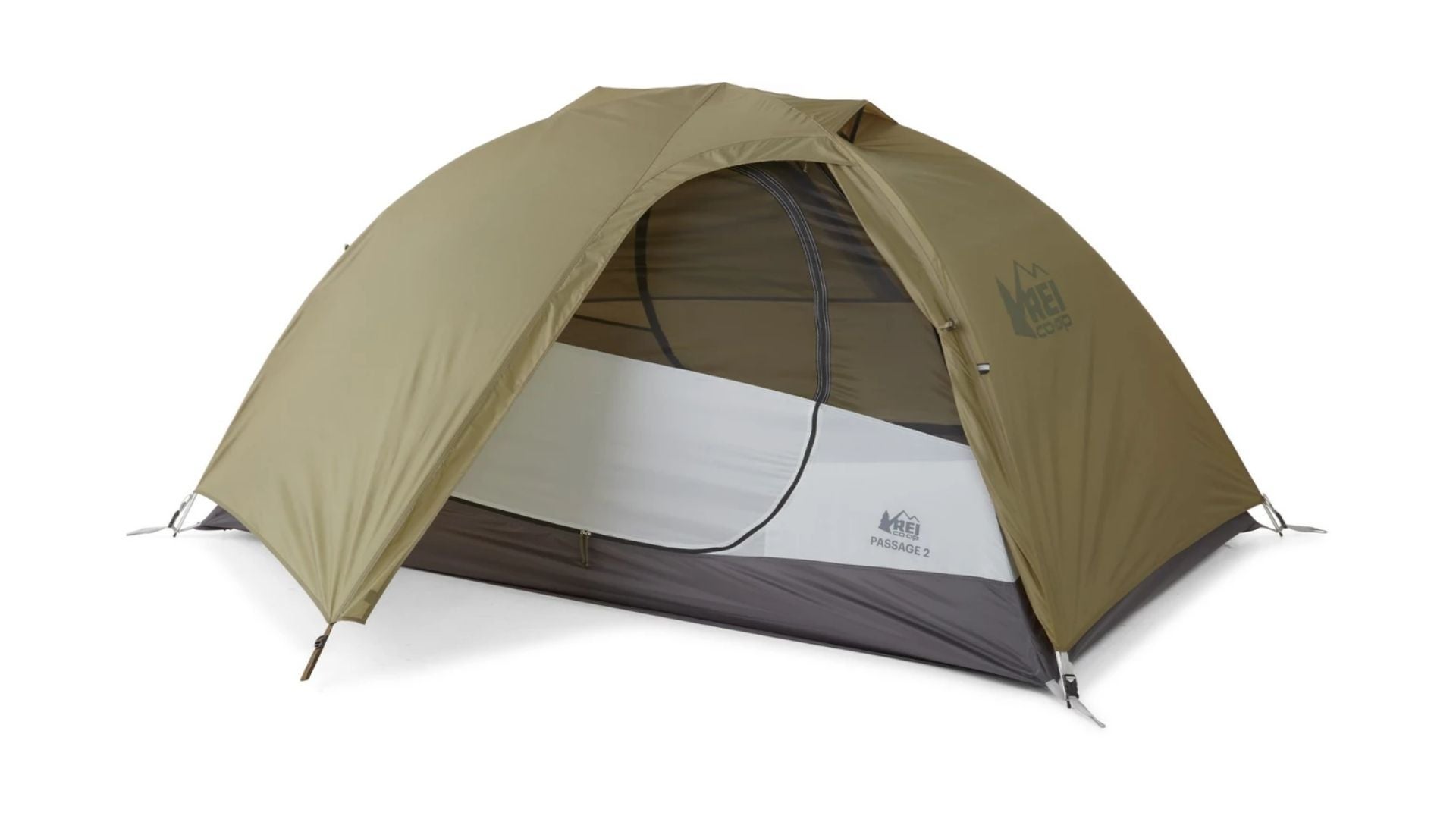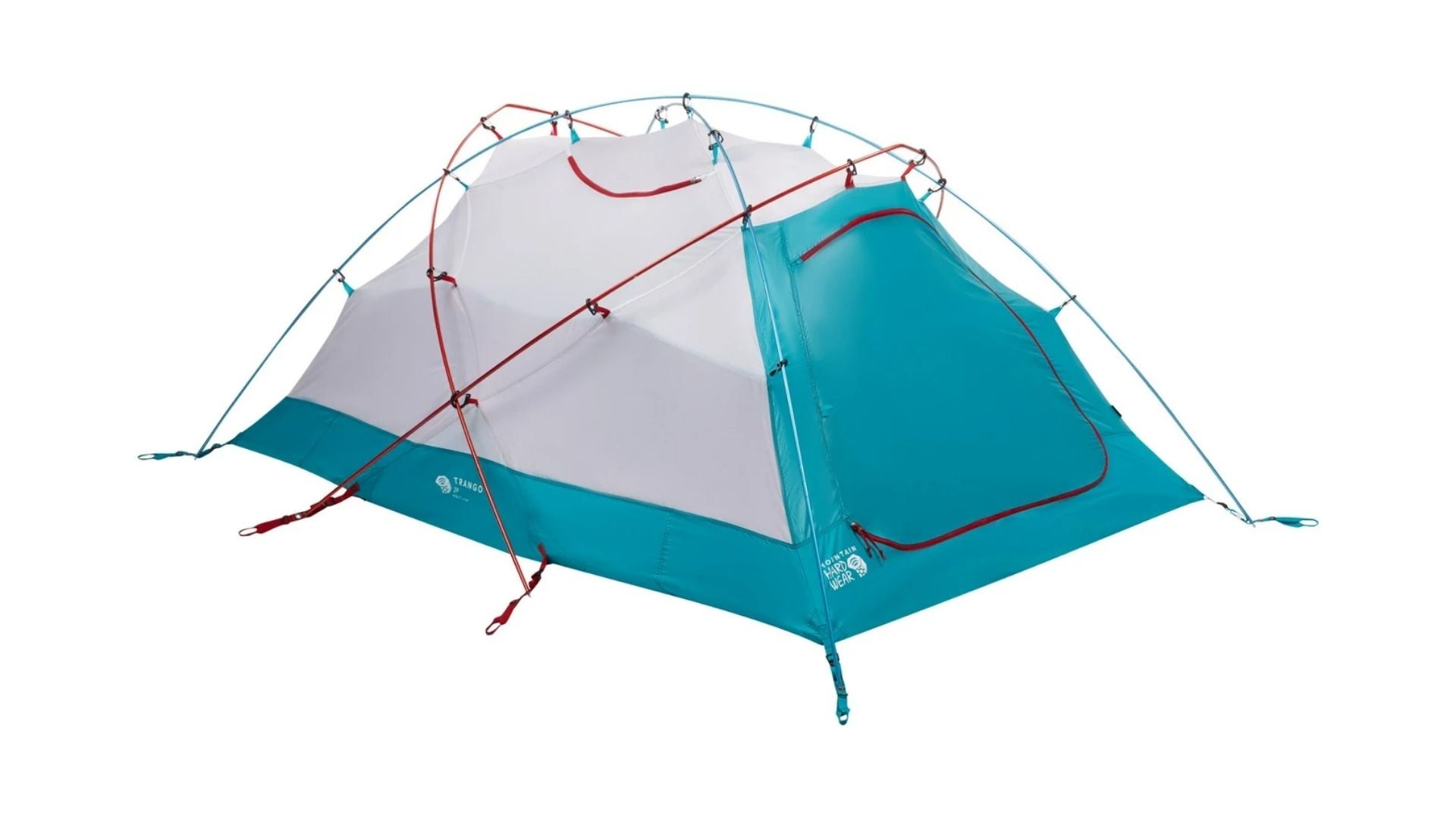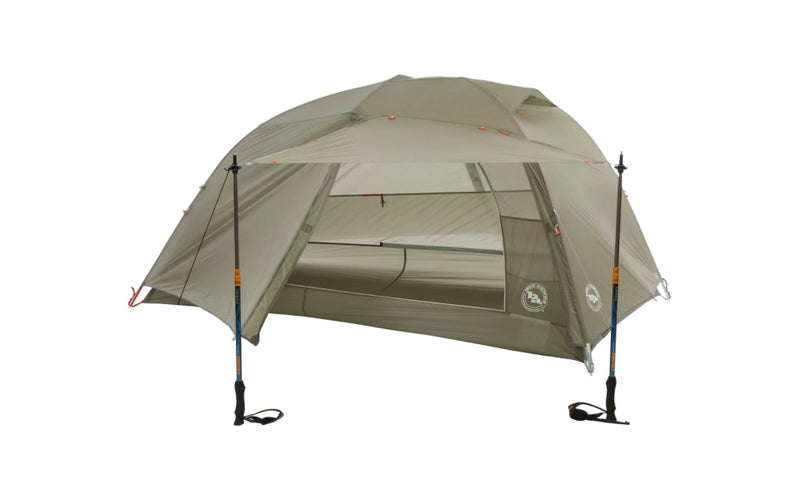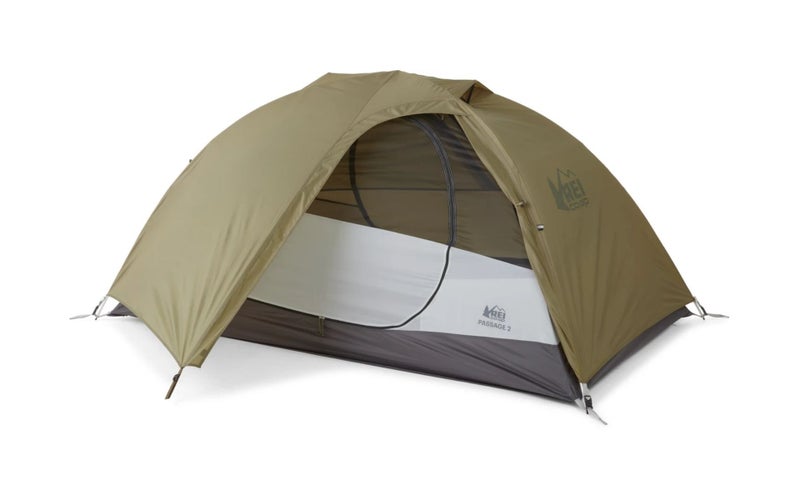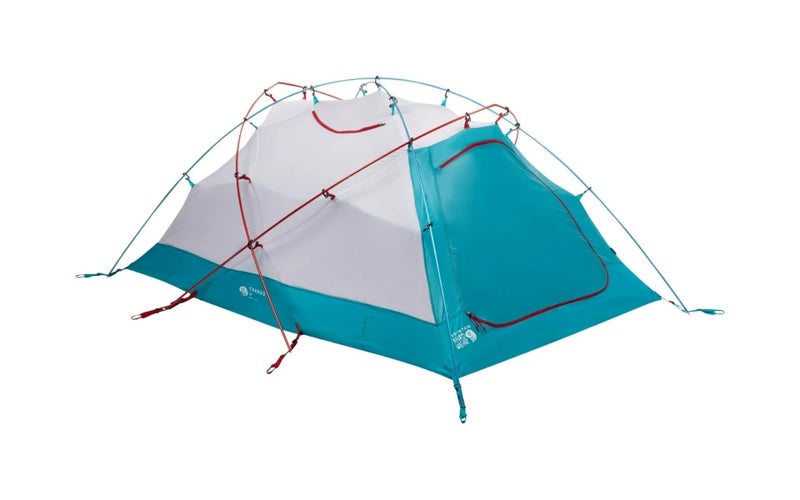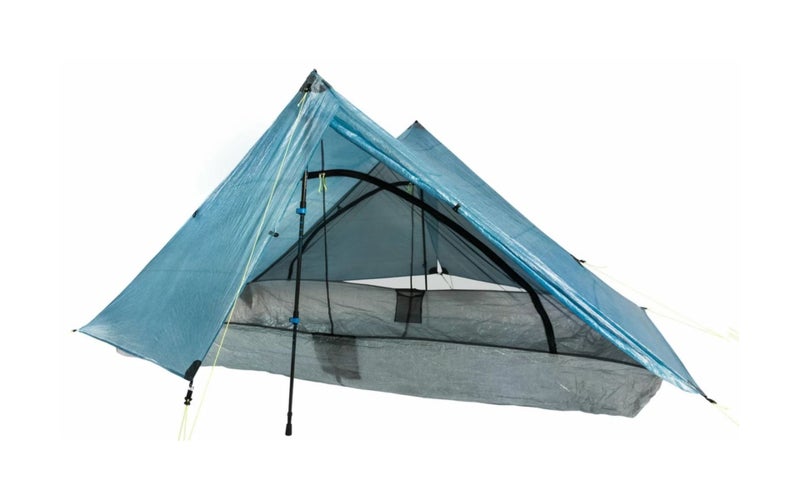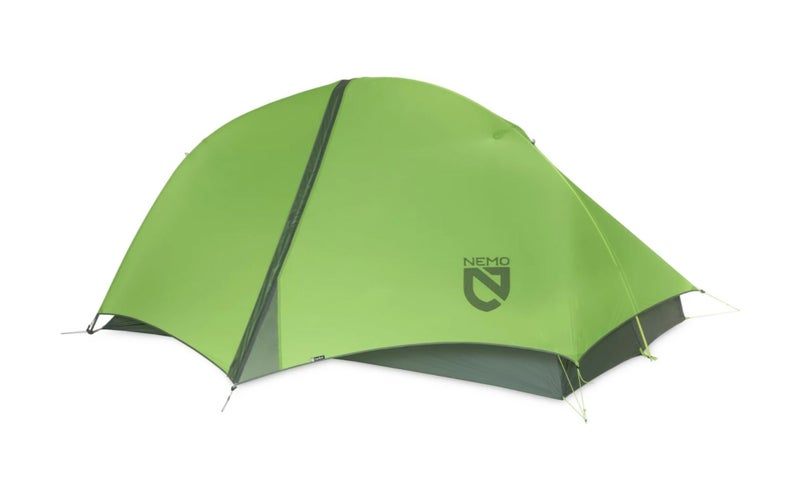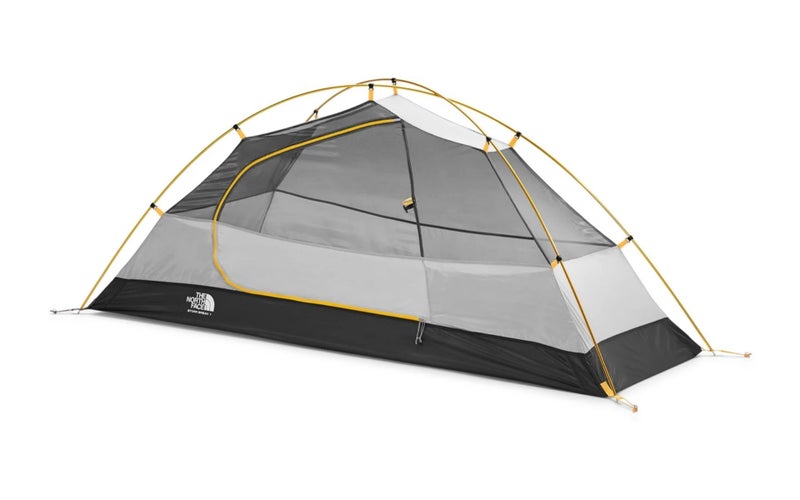We may earn revenue from the products available on this page and participate in affiliate programs.
In the world of long-distance backpacking, we’re super concerned about weight, especially with backpacking tents. Your tent is one of the “big three” items you carry in terms of weight — the other two being your sleep system and your backpack itself. As the old minimalist saying goes: Less is more. Less weight is more distance, more enjoyment, and also more cost.
Backpacking tents are generally classified around two main characteristics: the number of sleepers, or capacity, and the weather conditions they will be used in. Three-season tents are generally designed for spring, summer, and fall use, while four-season tents tend to be made out of more rugged materials to withstand winter snow and high winds on mountains.
Methodology
I’m an experienced long-distance backpacker. I spent 20 years humping overdesigned, heavy, and poorly designed military backpacks and tents, and now am on a quest to seek the lightest, best designed, and most economical backpacking and mountaineering gear on the planet. I have completed more than 700 miles of the Appalachian Trail to date, and have also done some epic climbs in places like the Grand Teton, Rocky Mountain, and Mount Rainier National Parks. I’ve owned and used more than seven tents in my time — everything from ultralight three-season tents to mountaineering tents that feel like portable bomb shelters.
To find the best backpacking tents for 2022, I reviewed and used a variety of tents and also solicited the input of friends who spend extensive time in the outdoors and a few mountain guides I know and respect — people who use this gear professionally in some pretty hazardous conditions.
I specifically looked at the following criteria: weight, design, floor area, quality of materials, weather resistance, ease of use, and packability. I also gave consideration to other factors like unique innovations, advanced materials, and headroom. All told, I’m pretty confident you won’t go wrong with any tent on this list — I went after the best, but the trick is finding the right tent for your needs and uses.
All the backpacking tents in this review were selected based on personal ownership, performance reputation, hands-on inspection, interviewing other experts, and thoroughly reviewing manufacturers’ specifications. I take my time to get to know the strengths and weaknesses of each tent, and also check out the reviews of other experts just to make sure we’re not missing anything.
The outdoor world is pretty obsessed right now with the Big Agnes Copper Spur HV UL2. Big Agnes brought this well-designed, roomy two-person tent to market in an unbelievably light three-pound package. I’ve seen many ultra-lightweight tents in my travels, but these generally have lofty price tags and require special care to ensure durability. The Big Agnes Copper Spur HV UL2 is a good compromise between durability, space, and weight.
The Copper Spur HV UL was recently redesigned and designated the UL2. This three-season, free-standing, double-walled ultralight tent has lighter and stronger materials and more user-friendly hardware to improve efficiency of set-up. New awning-style vestibules with double zippers means each hiker can enter and exit on their own side of the tent and not have to crawl over their buddy in the middle of the night when you have to take a leak. Additionally, the vestibules can be set up as awnings for sun protection using trekking poles. The new 3-D bin at the foot of the tent and the oversized ceiling pocket at the head provide additional storage. The UL2 also reduces condensation with dual low-vent vestibule doors and a high fly vent to maximize air circulation.
The tent body is made from proprietary ultralight double ripstop, mixed, breathable denier nylon and polyester mesh and provides extra tear strength and puncture resistance without adding weight. The new proprietary tent corner construction speeds setup by combining three functions: pole tip capture, rainfly attachment and tensioner, and stake out loop. The new pre-bent span pole with an innovative four-way hub increases strength and stability and maximizes interior volume. All told, Big Agnes took a great tent and made it even better. My main gripe is that at $500, the footprint and gear loft should be included.
- Weight: 3 pounds 2 ounces
- Capacity: 2 sleepers
- Packed size: 19.5 x 6 inches
- Floor area: 29 square feet
- Head height: 40 inches
- Vestibule area: 9 square feet
- Number of seasons: 3
- Doors: 2
Well-made
Well-designed
Great space per weight ratio
Versatile; twin vestibules turn into sun awnings
Roomy
Expensive
Footprint and gear loft not included
One of the things I love about REI is that it makes some great entry-level gear and sells it at an affordable price. While BA’s Copper Spur HV UL2 will run you about five Benjamins, REI’s Passage 2 costs $159. Sure, it’s a bit heavier, but it’s a serviceable three-season tent that will also give you two more square feet of floor space and many of the same features — like double entry doors, super easy setup, tons of storage space, and simple, efficient design.
The Passage 2 is designed around an X-pole configuration, which is nice because it’s easy to set up and gives you more usable space at the ends of the tent. The fly has two vestibules that can be staked out to provide a big area for gear storage under the fly. The Passage also has adjustable ceiling vents to let moisture out and reduce condensation. This tent is also a stargazer — you can roll the fly doors over the roof for a clear view of the night sky and to also increase bug-free ventilation on those humid summer nights. The simple rectangular floor plan isn’t particularly inspired, but it functions well. The interior doesn’t have as much organized storage as the BA Copper Spur, but it’s sufficient.
All in all, this is a great entry level tent for backpacking or car camping. It’s a bit on the hefty side, so I’d recommend splitting the tent body and the fly and poles between two backpackers to cut down on the load.
- Weight: 5 pounds 10 ounces
- Capacity: 2 sleepers
- Packed size: 18 x 8 inches
- Floor area: 31 square feet
- Head height: 40 inches
- Vestibule area: 19 square feet
- Number of seasons: 3
- Doors: 2
Simple design
Quality build
Easy to set up
Weatherproof
Stargazing
Double doors and double vestibules
Affordable
Footprint included
Heavier
I’m a climber at heart, so given a choice between a mountaineering trip or a backpacking trip, I’m choosing the mountains every damn time. And when you head to the big hills, you need a tent that can handle everything nature can throw at you: 50-plus mile per hour winds, heavy snow, and driving rain. My favorite mountaineering tent for years has been the Mountain Hardwear Trango 2. It’s strong as hell, super easy to set up, intuitive to use, and has double entry points and a big-ass vestibule. Now, there are lighter four-season tents out there, but when mountaineering, between light and strong, I’ll carry a few extra ounces for strong — and this tent is bombproof. I swear to god, when NASA returns to the moon, they’ll put one of these at their basecamp in the Shackleton Crater.
Skeptical? Watch videos of people climbing Mount Everest or K2 and you’ll easily be able to pick out the Trango 2’s iconic rain fly. Adventurers have taken the Trango 2 to the harshest environments in the world and it has earned its reputation as a top performer. First introduced in 1995, the Trango family of tents has withstood the test of time. The Trango 2 is designed for two people set on alpine climbing, although I also use it as a winter backpacking tent.
The Trango 2 features two D-shaped front and rear doors, a bathtub-style floor for weather protection, and five super-strong, color-coded and shock-corded DAC Featherlight NSL poles. The Trango 2 has direct connection points to secure the tent body, frame, and fly at each guy-out point, and the D-ring pole snaps are easy to manipulate with gloved hands when you are freezing your ass off on Aconcagua or Mount Vinson Massif. The fly and tent floor are waterproof and seam-sealed. The footprint is spacious and the tent body features internal tension shelves for storage. The tent and fly have a zippered through-vent for ventilation, and feature two roomy vestibules at each end.
- Weight: 8 pounds
- 9 ounces Capacity: 2 sleepers
- Packed size: 24 x 8 inches
- Floor area: 40 square feet
- Head height: 38 inches
- Vestibule area: 12 square feet
- Number of seasons: 4
- Doors: 2
Bombproof design
Roomy
Easy to use
Exceptional wind resistance
Waterproof
Heavier
Pricey
Bulkier
The Zpacks Duplex is an absolute favorite among ultra-long distance backpackers. You’ll see a lot of these being carried by through-hikers on the Pacific Crest and Continental Divide Trails, and even the Appalachian Trail. Zpacks specializes in ultra lightweight backpacking gear and the Duplex is a three-season tent designed for, you guessed it, two backpackers. When you’re really putting down the miles, the Duplex is the simplest to deploy, tear down, and pack up — day-after-day-after-day-after-day. The Duplex is made from an advanced super-strong material called Dyneema, which is an ultra-high molecular weight polyethylene (UHMwPE) that’s used in everything from bulletproof vests to ropes and nets, to tents and packs. This tent is so freaking light, it’s lighter than most one-person shelters and it sleeps two.
Because you’re carrying a lot less weight, you can travel farther and faster with less fatigue. It’s won more than nine design awards and was voted most favorite tent for Appalachian Trail through-hikers for two years in a row. It does have some quirks and cons, though. First off, it’s expensive — almost $600. The fabric is also noisy to move around in and also in the wind, so get used to a persistent crinkley sound. It’s also a single-walled tent (no fly), so you’ll have to consider condensation on the interior and you’ll need to bring a pair of trekking poles along to prop it up. It’s also not free-standing, so you’ll need to stake it out with guy lines every time. Also, the placement of the trekking poles is right at the apex of the tent in the middle of the entry doors. It does have a flexpole kit add-on option that provides an X-frame and makes it more free-standing, but that also costs an additional $125 and adds 10.2 ounces (29.6 ounces and $724 total).
- Weight: 1 pound 3 ounces
- Capacity: 2 sleepers
- Packed size: 12 x 6 inches
- Floor area: 28 square feet
- Head height: 48 inches
- Vestibule area: NA
- Number of seasons: 3
- Doors: 2
Unbelievably lightweight
Packs small
Simple design
Easy to set up
Expensive
Requires trekking poles to set up
Noisy material
The NEMO Hornet is a great semi-free-standing three-season ultralight backpacking tent. It’s pretty spacious and the setup is fast and easy because it is designed with a single hubbed pole with ball-and-socket end tips, volumizing struts, and solid pole clips. The Flybar design adds room at the head, and the color-coded guy lines and pole sections make deploying the tent intuitive. It comes with an additional divvy sack so you can make your pal carry half the load, and the 10D nylon ripstop fabric is durable and saves weight. The Hornet 2 also has dual entry points with dual vestibules and a mesh canopy for breathability and stargazing. The interior has decent organized storage space and an overhead sleeve for a headlamp to illuminate the interior at night.
The Hornet 2 is pretty weatherproof and stormproof, too. I’ve heard of it surviving 80 mph winds and even some heavy snow. The floor and rainfly are treated with silicone on the outside and polyurethane on the inside and rated to 1,200mm. On the downside, it doesn’t have the best headspace and the walls collapse a bit inward even when properly staked. Some folks report trouble staking out the rainfly properly so it doesn’t sit on the tent body and collect condensation. It also comes with stakes, guylines, and a repair kit. NEMO also offers a footprint at additional cost and lighter-weight Airpin stakes (sold separately).
- Weight: 2 pounds 6 ounces
- Capacity: 2 sleepers
- Packed size: 19.5 x 5.5 inches
- Floor area: 27.5 square feet
- Head height: 39 inches
- Vestibule area: 14.2 square feet
- Number of seasons: 3
- Doors: 2
Lightweight
Packs small
Simple design
Easy to set up
Rainfly can be tricky to keep off the body
Not totally free-standing
The North Face has been up and down as a brand over the years, in my opinion. It started out as a reputable mountaineering company in 1968, started losing focus in the late 1990s when it moved into streetwear, and then became a status label in the 2000s. My first pair of three-layer GoreTex mountaineering pants were electric purple and made by The North Face, but I really haven’t paid much attention to it since, so I was surprised to see it’s making a nice solo backpacking tent in the Stormbreak 1.
The Stormbreak 1 is a reliable free-standing three-season tent that comes with a polyester rainfly and body and sports a large door and vestibule. With the upper half made from see-through mesh, it offers great breathability and air circulation under the fly. It also features a fully seam-taped canopy and floor. The Stormbreak is easy to pitch and tear down and pack away. I really liked the color-coded index for the tent, rainfly, and poles, which helps ensure you put the fly on properly the first time. The fly is made from 75D polyester with a 1,200 mm rating and PU coating. The tent can be left behind for fastpacking, and you can combine the fly, poles, and footprint for a minimalist shelter. The tent body is 40D polyester mesh. The floor is 68D polyester with a 3,000mm rating and PU coating.
- Weight: 3 pounds 7 ounces
- Capacity: 1 sleeper
- Packed size: 22 x 6 inches
- Floor area: 18.1 square feet
- Head height: 34 inches
- Vestibule area: NA
- Number of seasons: 3
- Doors: 1
Lightweight
Free-standing
Easy to set up
Affordable
Stargazing
Fastpacking-capable
Footprint not included
Our verdict on backpacking tents
Backpacking tents are a no-brainer for people who want to carry the least amount of weight possible while gaining the maximum effective shelter possible. All of the tents reviewed today meet these criteria, although they widely vary in floorspace, price, and weight. I did my best in this review to cover most users’ needs. I’ve been sold (and remain sold) on the Mountain Hardwear Trango 2 as my tent of choice in the mountains, and I really like the Big Agnes Copper Spur for three-season use. For fastpacking with a super minimal setup, The North Face Stormbreak’s fly, poles, and footprint are a great option.
What to consider when buying backpacking tents
I have three main considerations when selecting a backpacking tent: weight, because you have to carry it everywhere you go; ease of setup, because I don’t want to be fucking around in the dark after a long day, especially in the cold with gloves on; and liveable space, because I want the largest amount of square feet at the lightest weight possible. Oh, and there’s a fourth: cost. Look for the least expensive tent that meets all your needs. You’ll want to have some extra cash for burritos and beer after your trip.
Types of backpacking tents
Free-standing
Free-standing tents can stand up on their own without the use of guylines and stakes. These tents generally use an X-pole design and are super easy and quick to set up — even with one person. Want to relocate it because your dumb ass just set it down on a ground hornet nest? No problem! Just pick it up by the poles and run like hell for a bit. Reposition and enjoy!
Non-free-standing
Many ultra lightweight tents are non-free-standing because the poles don’t have to be as strong and they’re held in place with tension from guy lines. They’re a bit harder to set up and definitely harder to reposition. With a bit of experience, you can set them up fairly quickly. With many, you can just use adjustable trekking poles and leave the tent poles at home, saving even more weight.
Three-season
Three-season tents are lighter and designed to be used in spring, summer, and fall. These tent designs prioritize low weight balanced with breathability/air flow and rain and wind resistance. They are designed to withstand rain downpours and some light snow, but many will collapse under heavy snow and excessive winds.They typically have large mesh areas for walls, more upright walls to maximize headroom, and fewer poles and lighter denier fabrics.
Four-season
When you go to the big hills or camp in winter, it’s no time to fuck around. The mountains can kill you. Hypothermia can kill you. So take a tent that’s built for the task. Four-season tents are designed to take punishing winds, heavy snow loads, so they’re made from heavier materials and have more poles. They also have a lot less ventilation and will have zippered ventilation areas and more rounded geodesic dome shapes. With four-season tents, the rain flys are also robust and cover the tent to the ground. Many are equipped with reinforcing points on the flys and are designed so the flys attach directly to the poles across the tent.
Key features of backpacking tents
Capacity
Most backpacking tents are designed for two sleepers. Some accommodate three or as few as one. To save weight, they’re much tighter than those big-ass circus tents people take car camping — the ones that sleep four or more campers. Tent floor plans vary, so try them out to make sure you fit comfortably with a buddy. I prefer two-person tents with large vestibules for additional gear storage out of the rain.
Weight
I like backpacking tents that are under four pounds. Pay attention to the specs as they have different weight statistics. Minimum trail weight accounts for only the tent body, rainfly, and poles. Packaged weight is everything the tent comes with — generally including stakes, guylines, repair kits, and footprints.
Packability
Backpacking tents are designed to take up as little space as possible when packed into a backpack. I often separate the poles and fly and give them to a buddy to carry, and I’ll take the tent body and stakes. I also use a stuff sack for the tent and another for the fly to really crush down the size.
Backpacking tent pricing
I’ve seen backpacking tents under $100 to tents over $800. Like most backpacking and climbing gear, the more you pay, the less it weighs, the more advanced the materials in the build, and the more functional the design.
Budget
If you can get a backpacking tent for under $160, you’re in the budget zone. Really check these tents out, especially the cheaper you go. Watch out for heavy materials, heavy poles, and poor weather resistance. With that said, you can find some good tents in this range.
Mid-range
I consider $160 to $300 to be mid-range for a backpacking tent. These tents will have all you need but might not be the lightest or have all the design features you want. Many are a good balance between weight and functionality.
Premium
Anything over $300 and you’re into the Gucci zone. If you really want to get silly and lay down some bank, check out the Hilleberg Anjan 2 GT for $875 — shaped like a bullet for fending off the wind.
Tips and tricks
The most important thing when choosing a backpacking tent is to pick one that looks cool and impresses the other hikers and especially the bears. Remember, a good-looking tent filled with hikers is essentially a big attractive burrito for a Kodiak bear. No, seriously, really shop around. Think about what you need and what you don’t. Make a list and compare. Thinking twice and buying nice is my motto. This will prevent you from buying a cheap or heavy tent that you’ll use a few times and then get frustrated with, and then buy the higher-quality tent you wanted in the first place. Oh, yeah, and also look for rock-solid warranties.
FAQs of backpacking tents
You’ve got questions, Task & Purpose has answers.
Q: How heavy should a tent be for backpacking?
A: What? Are you a masochist? It shouldn’t be heavy at all. Look to keep weights below four pounds — lighter if you can.
Q: What’s the difference between a camping tent and a backpacking tent?
A: Camping tents are generally large and sleep four or more people. They’re usually filled with screaming kids and are placed in KOA parks next to a hundred other tents filled with more screaming kids and a few noisy drunks. In short, they are a misery. Backpacking tents, on the other hand, are small, lightweight, and sleep one to three people. They are the tents you use when you want to get far into the woods and escape all the idiots.
Q: Should I get a single- or double-walled tent?
A: It depends. Cold and dry environments? Go with the single. Wet and hot? Go with the double.
